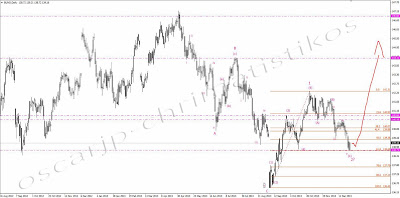Hi,
Friday we got to know the most important figures of the past week. Non-Farm Employment changed only by 74k where investors expected 196k. This information has been read by investors in the first minutes of the negative information which led to the weakening of the dollar against the euro. It is worth noting that the latest reading was revised from 203k to 241k. The unemployment rate fell to 6.7 percent; expected 7.0 percent.
Moments later, appeared the first comments, one of them is worth noting namely Citi believes that "We can see that large investors sell EURUSD upon any small increase in the steam, the data is not much change for QE3"
A little more details regarding Non-Farm Employment.
A breakdown of the data for individual sectors:
- Total: +74k
- Retail Trade: +55 k
- Wholesale Trade: +15 k
- Sector engineering:-16k
- Media and information sector:-12k
- Financial and business services: +19 k
- General government:-13k
On Friday also spoke Lacker (FED): "I expect that the next meeting of the Fed will be a discussion about cut QE3 by 10 billion"
Cut QE by 10 billion dollars also expect Goldamn Sachs and JP Morgan. Goldman Sachs also commented weak reading of Non-Farm Employment: "A low reading the indicator was caused by weather situation in the U.S."
An important event at the end of last week was the appearance of increased demand for bonds.
On Friday, U.S. Treasury yields fell:
2Y fall from 0.4250 to 0.3819,
3Y from 0.8726 to 0.7975, and
10Y from 2.96 to 2.88.
What's more, investors also are buying German bonds, which yields also fal:.
2Y from 0.208 to 0.187,
3Y from 0.322 to 0.296,
and 10Y from 1,886 to 1,850.
Although the movement in the same direction, U.S. yields falling faster than German yields, which favors the euro in the short term, as a consequence of the spread increases.
To better clarify the situation in the euro zone below I will present some data that will be interest of my readers. This is in a sense a continuation of my post "total fail of the European Union" from 16th December 2013
- The unemployment rate in the eurozone as a whole is still sitting at an all-time record high of 12.1 percent;
- Italy, the unemployment rate has soared to a brand new all-time record high of 12.7 percent;
- The youth unemployment rate in Italy has jumped up to 41.6 percent;
- The level of poverty in Italy is now the highest that has ever been recorded;
- Many analysts expect major economic trouble in Italy over the next couple of years. The President of Italy is openly warning of "widespread social tension and unrest" in his nation in 2014;
- Citigroup is projecting that Italy's debt to GDP ratio will surpass 140 percent by the year 2016;
- Citigroup is projecting that Greece's debt to GDP ratio will surpass 200 percent by the year 2016;
- Citigroup is projecting that the unemployment rate in Greece will reach 32 percent in 2015;
- The unemployment rate in Spain is still sitting at an all-time record high of 26.7 percent;
- The youth unemployment rate in Spain is now up to 57.7 percent - even higher than in Greece;
- The percentage of bad loans in Spain has risen for eight straight months and recently hit a brand new all-time record high of 13 percent;
- The number of mortgage applications in Spain has fallen by 90 percent since the peak of the housing boom;
- The unemployment rate in France has risen for 9 quarters in a row and recently soared to a new 16 year high;
- Deutsche Bank, probably the most important bank in Germany, is the most highly leveraged bank in Europe (60 to 1) and it has approximately 70 trillion dollars worth of exposure to derivatives;
The conclusion that the data arise after the leave for themselves. Anyone who reads this entry should think about whether the eurozone has a chance survive?
So as bad as things are right now, the truth is that this is nothing compared to what is coming.
regards,
oscarjp
The information contained in this publication is not intended as an offer or solicitation for the purchase or sale of any financial instrument. Any opinion offered herein reflects oscarjp-chrimatistikos current judgment and may change without notice. Users acknowledge and agree to the fact that, by its very nature, any investment in shares, stock options and similar and assimilated products is characterised by a certain degree of uncertainty and that, consequently, any investment of this nature involves risks for which the user is solely responsible and liable.



























